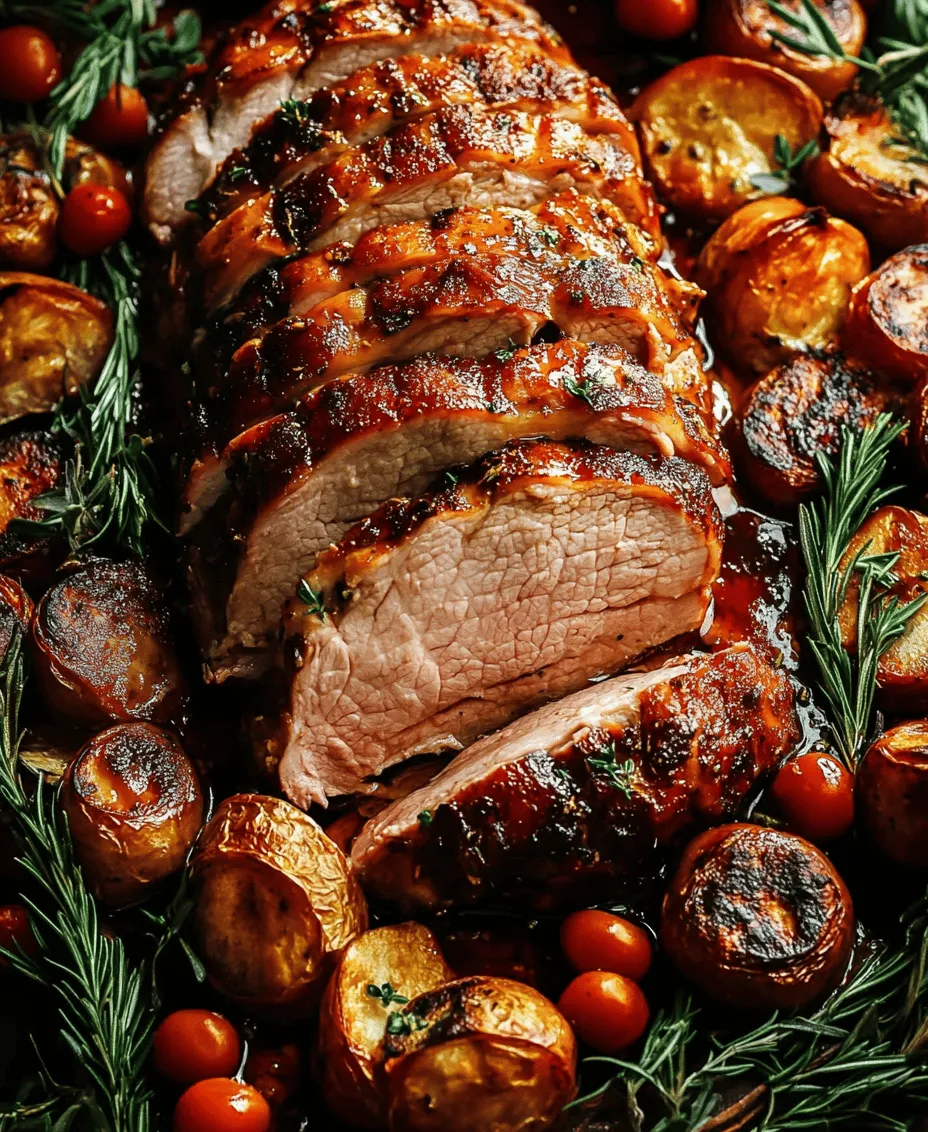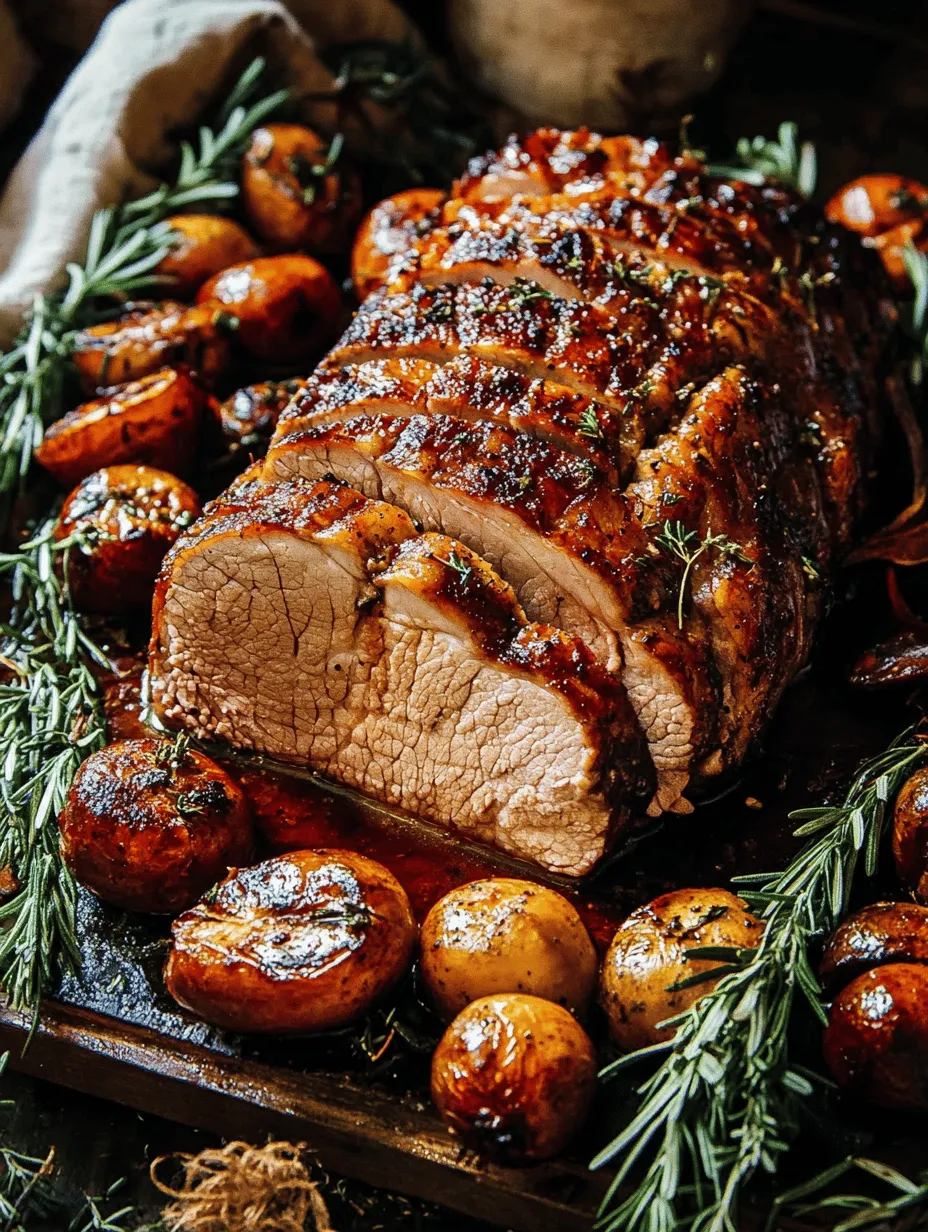Introduction
Pork tenderloin is a culinary gem that has earned its place as a go-to dish for any occasion, from family dinners to festive celebrations. Its allure lies not only in its tenderness and subtle flavor but also in its impressive versatility. Whether you are preparing a weeknight meal or a holiday feast, a perfectly cooked pork tenderloin roast can elevate any dining experience. The key to achieving this mouthwatering result hinges on two vital components: the quality of the ingredients and the cooking techniques employed.
In this article, we will delve deep into the art of crafting a juicy and tender pork tenderloin roast. We will explore the unique characteristics of this cut of meat, break down the ingredients required for the recipe, and provide you with tips and techniques to perfect your roast. By the end of this guide, you will have all the knowledge you need to impress your guests or treat yourself to a deliciously satisfying meal.
Understanding Pork Tenderloin
Pork tenderloin is a long, narrow cut of meat that comes from the muscle that runs alongside the backbone of the pig. It is renowned for being one of the most tender cuts available, making it a favorite among home cooks and professional chefs alike. The texture of pork tenderloin is fine-grained and tender, with a mild flavor profile that allows it to absorb seasonings and marinades beautifully. This makes it a versatile choice for a variety of cooking methods, including roasting, grilling, and sautéing.
Characteristics of Pork Tenderloin
One of the standout features of pork tenderloin is its remarkably low fat content, which contributes to its tenderness while also making it a healthier option compared to fattier cuts of pork. When cooked correctly, pork tenderloin remains juicy and flavorful, making it an ideal centerpiece for any meal. The cut’s ability to take on a variety of flavors—from savory herbs to bold spices—adds to its culinary appeal.
Unlike other cuts of pork, such as shoulder or ribs, which require long cooking times to break down tougher connective tissues, pork tenderloin cooks quickly, typically taking only 20-30 minutes in the oven. This makes it an excellent choice for busy cooks who want a satisfying meal without spending hours in the kitchen.
Nutritional Benefits
In addition to its delectable taste and tenderness, pork tenderloin offers several nutritional benefits. It is a rich source of high-quality protein, essential for muscle building and repair. A typical 3-ounce serving of cooked pork tenderloin contains about 22 grams of protein while being low in calories (around 120 calories) and saturated fat. Furthermore, it provides essential vitamins and minerals, including thiamine, niacin, vitamin B6, phosphorus, and selenium.
Because of its lean profile, pork tenderloin can fit seamlessly into various dietary plans, including those focused on weight loss, muscle gain, or overall healthy eating. It can be enjoyed as part of a balanced diet when paired with a variety of sides, such as roasted vegetables, grains, or salads.
Ingredients Breakdown
To create a succulent and flavorful pork tenderloin roast, it’s essential to select high-quality ingredients and understand their roles in enhancing the dish’s overall flavor. Below, we will break down each ingredient used in the recipe, highlighting their significance and how they contribute to the final result.
High-Quality Pork Tenderloin
The cornerstone of any successful pork tenderloin roast is, of course, the pork itself. When selecting your tenderloin, look for cuts that are bright pink in color, with minimal marbling and a firm texture. Freshness is key, so choose pork that has a clean, slightly sweet smell and avoid any that appear discolored or have an off-putting odor. If possible, consider sourcing your pork from local farms or reputable butchers who prioritize humane and sustainable practices.
Olive Oil
Olive oil plays a crucial role in the cooking process by providing moisture and aiding in the searing of the pork. Not only does it help achieve a beautifully browned exterior, but it also contributes to the overall flavor profile. Extra virgin olive oil is recommended for its higher quality and more robust taste, making your dish even more delectable.
Garlic Powder and Onion Powder
Both garlic powder and onion powder are essential for adding depth of flavor to your roast. These seasonings provide a savory base that enhances the natural taste of the pork without overpowering it. Garlic powder offers a mild, aromatic flavor, while onion powder adds a touch of sweetness. Together, they create a well-rounded seasoning blend that elevates the dish.
Smoked Paprika
For those who enjoy a hint of smokiness, smoked paprika is a fantastic addition to the seasoning mix. This vibrant red spice is made from ground, dried peppers and imparts a warm, smoky flavor that complements the pork beautifully. It adds complexity and richness, making each bite a delightful experience.
Dried Thyme and Rosemary
Herbs are essential for infusing your pork tenderloin with aromatic flavors. Dried thyme and rosemary are two herbs that work particularly well with pork, providing earthy and herbal notes that enhance the overall taste. Thyme has a slightly minty flavor, while rosemary offers a robust and pine-like aroma. Together, they create a fragrant herb blend that pairs perfectly with the meat.
Salt and Black Pepper
Salt and black pepper are fundamental seasonings that enhance the natural flavors of the pork. Salt helps to draw out moisture and intensify the taste, while black pepper adds a subtle heat. It’s important to season your tenderloin generously to ensure that every bite is flavorful and satisfying.
Minced Garlic
In addition to garlic powder, incorporating fresh minced garlic into the marinade or rub adds an extra layer of aroma and taste. Fresh garlic has a more potent flavor than its powdered counterpart, making it an ideal choice for those who appreciate a bold garlic presence in their dishes.
Dijon Mustard
Dijon mustard adds a delightful tanginess to the pork tenderloin, balancing the richness of the meat. It also serves as an excellent adhesive for the seasonings, ensuring that they adhere well to the pork and infuse it with flavor during cooking. The acidity of the mustard helps to tenderize the meat, resulting in a more succulent roast.
Chicken Broth
Finally, chicken broth is used to keep the pork moist during cooking and can also be utilized for deglazing the pan after searing. The broth adds an additional layer of flavor and helps to create a delicious sauce that can be served alongside the roast. Opt for low-sodium chicken broth to maintain control over the saltiness of the dish.
—
By carefully selecting quality ingredients and understanding their roles, you can set the stage for an extraordinary pork tenderloin roast that is sure to impress. In the next section, we will delve into the detailed instructions for preparing and cooking your pork tenderloin, ensuring that every step is clear and easy to follow for a perfectly juicy and tender roast.

Preparation Steps
Preparing your pork tenderloin for roasting is a crucial step in ensuring a juicy and flavorful dish. Start by taking the pork tenderloin out of its packaging and patting it dry with paper towels. This step is essential because removing excess moisture allows for better browning during cooking. A well-seared exterior not only enhances the flavor but also contributes to the overall texture of the roast.
Next, season the meat generously with salt and pepper. Don’t shy away from using a good amount of seasoning; it creates a flavorful crust and enhances the natural taste of the pork. You may also choose to add garlic powder, onion powder, or your favorite herbs for additional depth of flavor. If time permits, consider marinating the pork tenderloin for a few hours or overnight. A marinade can infuse the meat with extra flavor and tenderness.
Once seasoned, it’s time to sear the pork tenderloin. Heat a skillet over medium-high heat and add a tablespoon of oil, allowing it to heat until shimmering. Searing is vital for flavor development; it creates a Maillard reaction that gives the pork a beautiful golden-brown crust. Carefully place the tenderloin in the hot skillet and cook on all sides for about 2-3 minutes until browned. This step locks in the juices and sets the stage for a flavorful roast.
After searing, transfer the pork tenderloin to a roasting pan or baking dish. This is where the deglazing technique comes into play. With the skillet still hot, add a splash of broth or wine to the pan and use a wooden spoon to scrape up the browned bits stuck to the bottom. These flavorful bits, known as fond, will add a rich depth to your dish. Pour the deglazing liquid over the pork in the roasting pan before placing it in the oven, ensuring that every bite is infused with flavor.
Cooking the Perfect Pork Tenderloin
Cooking pork tenderloin to perfection requires careful attention to time and temperature. First, preheat your oven to 400°F (200°C). Preheating is crucial as it ensures even cooking and helps the meat develop a nice crust. An oven that’s not at the right temperature can lead to uneven cooking, resulting in a tough or dry roast.
The ideal internal temperature for pork tenderloin is 145°F (63°C) when measured at the thickest part of the meat. Using a meat thermometer is essential for achieving this, as it removes the guesswork and ensures precision. Insert the thermometer into the center of the tenderloin, avoiding contact with bone or fat, as this could give an inaccurate reading. Once the pork reaches the desired temperature, remove it from the oven.
Resting the meat post-cooking is equally important. Let the pork tenderloin rest for at least 10 minutes before slicing. Resting allows the juices to redistribute throughout the meat, enhancing its juiciness and flavor. If you slice into the meat too soon, the juices will run out, leaving you with a drier roast. Cover the tenderloin loosely with aluminum foil while it rests to keep it warm.
Serving Suggestions
Now that your pork tenderloin is perfectly cooked and rested, it’s time to consider serving options. For a well-rounded meal, pair the pork with seasonal vegetables and starches. Roasted Brussels sprouts, carrots, green beans, or asparagus make excellent companions, adding color and nutrition to your plate. For starch options, consider serving the pork with creamy mashed potatoes, fluffy rice pilaf, or roasted sweet potatoes, all of which complement the tenderloin beautifully.
When it comes to sauces, there are several delicious options that can elevate your dish. Classic apple sauce is a timeless pairing with pork, offering a sweet contrast to the savory meat. Alternatively, a rich gravy made from the pan drippings can enhance the flavors even further. For a fresh twist, consider a homemade herb sauce featuring parsley, cilantro, or basil mixed with olive oil and lemon juice. This bright sauce can add a refreshing layer of flavor to the dish.
Presentation is key when serving your pork tenderloin. Slice the meat into medallions and arrange them on a platter or individual plates. Drizzle with sauce and garnish with fresh herbs or microgreens for a touch of elegance. A well-plated dish not only looks appetizing but also enhances the dining experience.
Common Mistakes to Avoid
While preparing pork tenderloin can be straightforward, there are common pitfalls that home cooks might encounter. One of the most frequent mistakes is overcooking the meat. Since pork tenderloin is a lean cut, it can dry out quickly if cooked too long. Always rely on your meat thermometer to check for doneness rather than cooking by time alone.
Another common issue is under-seasoning. Pork can be quite mild in flavor, and without sufficient seasoning, the dish may taste bland. Don’t be afraid to season generously and taste as you go, especially if you are using a marinade or brine.
Finally, improper resting can ruin your roast. Skipping the resting step may lead to a dry pork tenderloin, as the juices will not have time to redistribute. Always allow the meat to rest before slicing, ensuring that each bite is juicy and flavorful.
If you find yourself in a situation where the pork is overcooked, consider slicing it thinly and serving it with a sauce or gravy to add moisture. If it’s under-seasoned, a sprinkle of finishing salt or a drizzle of a flavorful sauce can help enhance the overall taste.
Conclusion
In summary, a juicy and tender pork tenderloin roast is not only a delightful meal but also a testament to the joys of home cooking. By following the preparation steps, cooking guidelines, and serving suggestions outlined in this article, you can create a dish that is sure to impress your family and guests. Remember to pay attention to details such as seasoning, cooking temperatures, and resting times to ensure the best results.
Encourage experimentation with different seasonings and marinades to make this pork tenderloin recipe your own. Whether you are serving it for a special occasion or a weeknight dinner, this roast can become a staple in your cooking repertoire. Celebrate the joy of creating flavorful dishes at home, and enjoy the delicious rewards of your culinary efforts.


